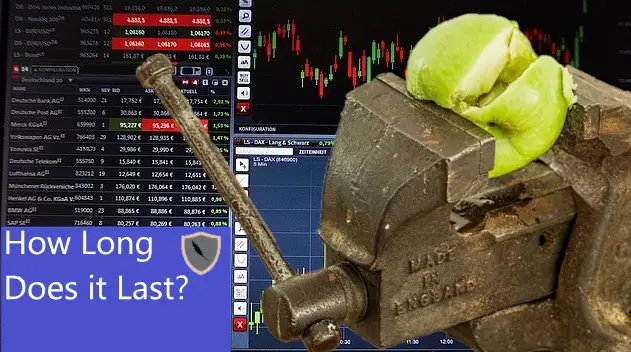Todays post is about the strategy of pairs trading stocks. This strategy is incredibly useful as you can ‘double-dip’ on a good investment thesis. I will go over the methodology/definition, finding the correlating stocks, the five steps to executing a pairs trade, and the pros and cons of taking out a pairs trade.
As always if you like content like this then you should consider sharing on social media, liking, following, and subscribing to our newsletter.
Let’s jump right in.
Definition and methodology of pairs trading
Definition
Pairs trading is when you take two positions in two different assets/stocks with the idea of making money off the correlation between the two assets as their prices begin to diverge.
For example if you think the cruise ship company Royal Caribbean is going to start taking market cap from Carnival Cruise Lines then you can buy Royal Caribbean and short Carnival.
One of the best things about pairs trading as a strategy is that for the large part it is market neutral. This means that the overall market shouldn’t impact this trade that much. As such pairs trading is a way that “smart” money such as hedge funds can position a long term trade without worrying about outside variables.
Methodology
So how does pairs trading work? Well the two correlating stocks that you identify will start to diverge in market-cap/price. If you did your homework properly then you would have bought/longed the stock that was increasing in value while at the same time shorting the stock that was decreasing in value.
If, in the above image, you went long in “A” and went short in “B” then you would have made double the money on day 16. This is because the value on day 16 for stock “A” is $1,300 while stock “B” is only $750. This is called playing a spread between two assets.
Blue on day 16 is worth $1,300. Red is worth $750.
Had you only bought the blue line in the above image then your total value on day 16 would be $1,300 and you would have only made a net profit of $300. Likewise if you shorted the red line then the net profit when you bought back your shares would be $300 as well.
By engaging in a pairs trade you doubled your profit from $300 to $600 by playing the spread, good job!
Finding a Pairs Trade
The hardest part about finding a pairs trade on the stock market is…. you guessed it, finding the pair of stocks to trade. The key to finding a pairs trade is finding stocks that correlate in value based on their underlying business model, revenue generation sources, or consumer basis.
Further, in order to properly engage in a pairs trade the sector the companies are involved in must be in a period of economic peak or contraction. This is because in a period of sector growth the two companies will be growing largely independent of the others actions. When a sector is growing the consumer base is so large that oftentimes there is no bottleneck for the two companies to compete over…yet.
Eventually every pairs trade needs to diverge or break down. This is because eventually the shorted company (company “B” in the above chart) will have to either die out or change its underlying business model/product to stop competing with the long company (company “A” in the above chart).
Once this happens then the pairs trade is broken and the companies “diverge” from being correlated to each other. This divergence is when the position should be closed and profits taken.
The Five Steps to a Successful Pairs Trade
Every pairs trade needs to be carefully thought out and executed. As such here are the Five steps to a pairs trade, from open to close.
- Find two companies with the same business model, same revenue generation source, and same consumer basis.
- Figure out the sector’s economic situation.
- Take positions in the short company and long company.
- Watch and adjust positions.
- Close position once companies diverge.
For these five steps I will use the companies Papa John’s Pizza (PZZA) and Domino’s Pizza (DPZ). These are two major pizza restaurant chains located primarily in the United States.
1.) Find two companies with the same business model, same revenue generation source, and same consumer basis.
This step is similar to looking at companies competitors when doing relative analysis. I recommend starting with a company that you are already familiar with their business model, revenue generation source/sources, and consumer basis.
For example, Papa Johns (PZZA) and Domino’s Pizza (DPZ). Both PZZA and DPZ share the same business model, selling pizzas to a consuming audience built around fast deliveries. Second, both DPZ and PZZA share the same revenue generation source, their pizza’s. Third, Both DPZ and PZZA share the same consumer base. Hungry people looking to order a quick pizza.
2.) Current Sector Economic Situation
For this step you need to do some homework. In a sector of growth you can expect both PZZA and DPZ to go up in a similar fashion. This is because in sectors with heavy growth competing companies will have room to increase revenue without engaging in competitive practices.
To do this, find out if the sector is undergoing one of the four economic cycles.
- Expansion
- Peak
- Contraction
- Trough
During times of sector expansion both PZZA and DPZ will have ample amounts of consumers of their pizzas. As such since even though the companies are correlated they will uptrend during this period of sector growth.
If your pairs trade at this point then buy and hold both stocks and wait. Eventually they will begin to diverge as one of the stocks becomes more competitive then the other. This typically happens during the cycle of peak.
3.) Take Positions in the Short Company and Long Company.
For this I look at what company has the most EBITDA going into the period of economic peak/contraction in the sector. If for example Papa Johns (PZZA) has more discretionary capital to spend on attracting/retaining consumers then I would place a long position on them. Subsequently I would place a short position on DPZ since I expect them to begin to lose market cap to PZZA.
In a perfect trade you would have equal portions of long PZZA and short DPZ. This is anything but the case as you would have to get a perfect trade on Day 1. This leads into the next step.
4.) Watch and Adjust Positions.
The pairs trading strategy requires near constant upkeep. This is because you can’t predict the future. There is a chance in this scenario that PZZA is actually the company too short and DPZ is the long, or maybe they are truly not even a pairs trade.
Whatever the case it’s pretty easy to see if the two companies are in fact eligible for a pairs trade within a short time period of the overall trade. Within 10% of the time length of the potential trade you should notice if both companies are diverging as expected.
On day 3 of the above image you would be able to tell that both DPZ and PZZA were in fact not a pairs trade and you could have closed or lessened the position. This is not rocket science and sometimes you are not going to be correct no matter how much time you throw at a situation.
The best case scenario is to just constantly keep checking up on and editing your position sizes. By doing this you will lessen your risk and be able to see if your underlying thesis of PZZA and DPZ (or whatever stocks) being a pairs trade.
5.) Close position once companies diverge.
No pairs trade lasts forever. They are hard to find and even harder to predict. Once you have one however you will know. The trick now is to properly close your position once the companies begin to diverge.
As we can see around day 16 is when PZZA and DPZ in our scenario diverge from being a pairs trade. At this point the position should be closed to maximize gain and minimize risk. Letting the position run longer than this divergence point will expose your trade to needless risk.
If properly done then you can expect to make close to double your potential gain while introducing only a little extra risk into your portfolio.
Pros and Cons of Pairs Trading
Like everything there are pros and cons, the strategy of pairs trading is no different.
Pro:
1.) This type of trade is called a statistical arbitrage because you are taking advantage of a growing price difference between two assets. As such you only depend on two types of stocks/assets and have little exposure to the larger market as a whole. Sure I supposed that if the U.S market tanked nobody would be buying pizzas but generally speaking PZZA and DPZ don’t care about the larger issues of insurance rates or inflation.
2.) If done properly the pairs trade can ‘double dip’ on a good investment thesis. Think x company is going up, then go see if it can be pairs traded with y company. If you are right then you can double dip on the same amount of research.
3.) It’s a relatively safe trade once executed properly. Just keep up with position sizing and make sure the pairs trade holds true.
Con:
1.) True pairs trades are rare nowadays. This is because most companies have more than one revenue stream along with having their hand in many different sectors.
2.) Finding a true competitor to hedge against a long company is hard. The market as a whole has become more niche and as a result oftentimes companies don’t have a direct competitor.
3.) Holding a short position will cost you in the long run. If you don’t keep up with the sizing it can quickly add up and eat into profits.
Conclusion
That’s a simple explanation of Pairs Trading, how to do it, and its value to your portfolio. Once you get these core concepts down you can break into statistical valuation and technical valuation to find more and more pair trading opportunities.
It’s a great tool to have within your investing toolbox and allows you to ‘double dip’ on a minimal increase in risk.
As always if you like content like this then you should share on social media, like, follow, and subscribe to our newsletter! Every share on social media helps me help other people generate wealth.
-
How Long Does a Short Squeeze Last? (3 Answers)

What is the time frame for you short squeeze? Well here is everything you will ever need to know to determine how long it will last.
-
Why You Still Own a Stock After It’s Delisted and How to Sell It

Do you still own a stock after its delisted? How do you sell it? Don’t worry the stock is still worth money and here is how to sell.
-
Can You Make 1% A Day in the Stock Market? (3 Steps)

Making 1% a day in the stock market is hard but defiantly doable. Here are 3 simple steps to helping you achieve this return.
Until next time, I wish you the best of luck in your investments!
Sincerely,


